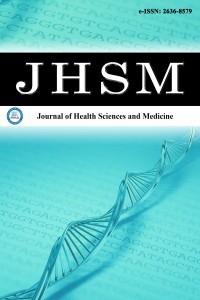
Journal of Health Sciences and Medicine
Yazarlar: Şadiye ALTUNTUZCU, Fatih GUZEL, Ali UYAR, İhsan KAPLAN, Yunus GÜZEL, Bekir TAŞDEMİR, Kendal YALÇIN
Konular:Sağlık Bilimleri ve Hizmetleri
DOI:10.32322/jhsm.990487
Anahtar Kelimeler:SUVmax,FDG-PET/CT,Nonalcoholic steatohepatitis score
Özet: Aim: Non-alcoholic fatty liver disease is one of the most common causes of liver disease worldwide with an estimated prevalence of 20%–30% in adult population. Following the widespread utilization of PET in the evaluation of malignant diseases, F-18 FDG have also been reported to be used in non-malignant processes. The aim of this study is to elucidate whether the FDG SUVmax values determined by PET/CT in different adipose tissue samples and the liver change according to NAFLD score. During our desktop research we did not find any published article therefore, it is the first study in this field. Materials and Method: A total of 230 patients who applied to Dicle University Faculty of Medicine, Department of Nuclear Medicine between March and April 2020 and who have been conducted FDG PET/CT for diagnosis, staging, restaging and evaluation of response to treatment were included in the study. Patients were divided into three groups according to their NAFLD score as patients with fibrosis score <-1,455 (the group in which severe fibrosis was excluded) as group-1, and those with NAFLD score between -1.455-0.676 (inter-mediate score) as group-2. and patients with a NAFLD score >0.676 (severe fibrosis group) group-3. Results: Liver SUVmax levels were found to be significantly higher in group-3 than group-1. No significant difference was observed between group-2 and group-3. SUVmax levels measured from supracalvicular region, posterior scapular region and mesentery region were not different from each other in all three groups. Glucose-corrected liver SUVglu levels were found to be significantly lower in group-1 than group-3 (p=0.001). In terms of liver SUVglu levels, group-1 and group-2 and group-2 and group-3 did not differ statistically from each other. Supracalvicular SUVglu, posterior scapular SUVglu and mesenteric SUVglu groups were not different from each other. Conclusions: The most important result of this study could be elaborated with increased FDG uptake in NAFLD. Liver FDG uptake increases as the severity of NAFLD increases as demonstrated by the NAFLD score.